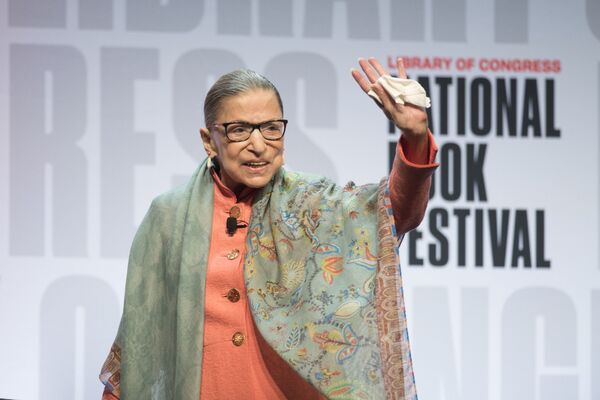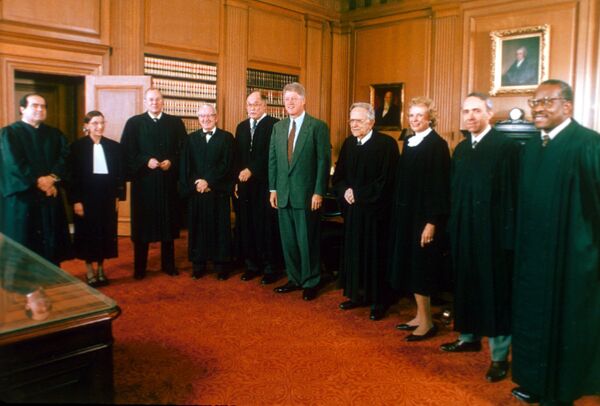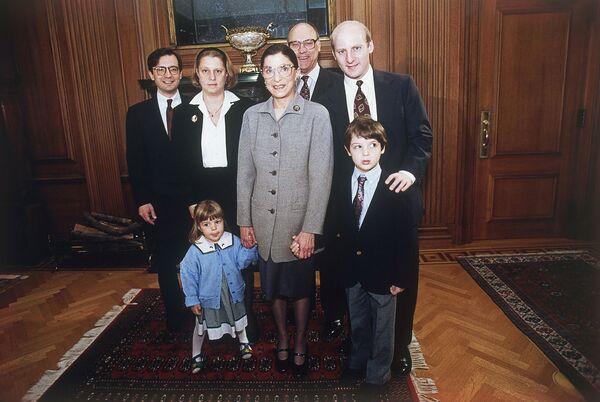“She led an amazing life,” President Trump said on Friday on learning from journalists that Ruth Bader Ginsburg had died. “What else can you say. She was an amazing woman, whether you agreed or not, she was an amazing woman, who led an amazing life.”
A powerful advocate for gender rights and the only female member of the Supreme Court for several years, Ginsburg indeed had many professional and personal victories in her life, but also suffered several tragedies. Here are some highlights of her amazing life, as it was put by the US president himself.
Brooklyn Girl
Joan Ruth Bader was born in Brooklyn, New York on 15 March 1933, into a Jewish family from Ukraine and Austria. Her older sister Marylin died of meningitis aged six, when Ruth was only a year old and her mother fell victim to cancer several years after, just shortly before Ruth’ graduation from high school.

The First Woman to…
A studious girl, Ruth attended James Madison High School and then Cornell University where she received a degree in Government and met the man who would become her husband, Martin Ginsburg. The couple married shortly after graduation from Cornell when she was 21 and moved to Oklahoma. Two years later, Ginsburg, already a mother to her first child Jane, enrolled at Harvard Law School, where she was one of 9 women among 500 men. She reportedly experienced a number of sexist comments from the university’s faculty throughout her study.
The future jurist then transferred to Columbia Law School to become the first woman to appear in two major legal journals, Columbia Law Review and Harvard Law Review. In 1959, she graduated from the university coming first in her class.
However, Ruth still struggled to find employment, according to her own accounts, because of being a woman, until she landed a job as a law clerk in the US District Court for the Southern District of New York.
In 1972, Ginsburg returned to Columbia Law School, this time to become the first full female professor and tenured female faculty member.
Finding Her Voice
Ginsburg, who became known to many simply as RBG, taught civil procedures at Columbia’s Law School for eight years, until she was nominated by Jimmy Carter on 14 April 1980 to a position in the US Court of Appeals. Before that, she had already become a volunteer attorney in the American Civil Liberties Union and then a general counsel at the union’s Women's Rights Project. During this work, she had advocated sexual equality in a number of high-profile cases before the US Supreme Court, where she would eventually work.

In 1993, RBG became the first Jewish female justice of the US Supreme Court on President Bill Clinton's nomination as he tried to increase the court's diversity but she was the second woman to serve as associate justice, the first having been Sandra Day O'Connor, who retired in 2006. After Day O'Connor's retirement, Ginsburg remained the only female at the board for three years until Sonia Sotomayor joined her in the court.
According to The New York Times’ Linda Greenhouse, these were the years when “Justice Ruth Bader Ginsburg found her voice, and used it".
Defender or Challenger?
Throughout her career, Ginsburg earned the status as a prominent defender of sex equality rights thanks to her role in a number of high-profile cases, including 1996 United States v. Virginia, where she judged that Virginia Military Institute's non-female admission policy was unconstitutional, or in 2007 Ledbetter v. Goodyear, where she disagreed with court’s “absurd” decision on pay discrimination. A visible representative of the Court’s liberal wing, she also famously insisted, when it came to anti-abortion laws that the government had “no business” in “making that choice for a woman”.

Ginsburg was also a trail-blazer in questions of fashion. She was the first justice to deviate from American court dress, opting instead for the French robe d'avocat, a looser garment with open sleeves and exposed buttons which she decorated with various necklaces and her fashion trends were then adopted by other women in the court, including Day O’Connor.

Ginsburg fought harsh battles not only in the court but in her personal life until her very last day. Her husband, and the father of her two children, Martin, was diagnosed with testicular cancer shortly after their first child was born in 1955. As advocates of egalitarianism in the family, they battled the decease together, itself a conflict with the received views of the day on the dynamics of marriage. Martin died in 2010 of complications from metastatic cancer. His wife, who has been fighting various forms of cancer since 1999, died on Friday, 10 years later.
To some, she will be remembered as someone who fought traditions while many others will remember her for balancing her fighting spirit with radical progressivism regarding her fierce opposition to anti-abortion laws or what she saw as any other form of discrimination against women.



